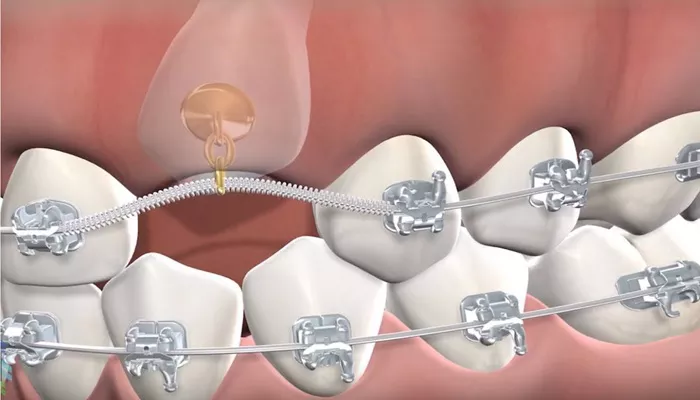Gum disease, also known as periodontal disease, is a common oral health issue that affects millions of people worldwide. It begins with gingivitis, characterized by inflammation of the gums, and can progress to periodontitis, which can lead to tooth loss and other serious health problems. As a result, finding effective treatments is crucial for maintaining oral health.
One substance that has garnered attention for its potential to treat gum disease is hydrogen peroxide. This essay explores the effectiveness, safety, and application of hydrogen peroxide in managing gum disease.
Understanding Gum Disease
What is Gum Disease?
Gum disease is an infection of the tissues that surround and support the teeth. It is primarily caused by the accumulation of plaque, a sticky film of bacteria that forms on teeth. When plaque is not removed through regular brushing and flossing, it can harden into tartar, leading to inflammation and infection.
Stages of Gum Disease
Gingivitis: The earliest stage of gum disease, gingivitis is marked by red, swollen gums that may bleed during brushing or flossing. This stage is often reversible with proper oral hygiene.
Periodontitis: If gingivitis is left untreated, it can progress to periodontitis. This stage involves deeper infection, affecting the bone that supports the teeth. Periodontitis can lead to gum recession and tooth mobility.
Symptoms of Gum Disease
Common symptoms of gum disease include:
- Swollen or puffy gums
- Bleeding gums during brushing or flossing
- Persistent bad breath
- Receding gums
- Loose teeth
The Role of Hydrogen Peroxide
What is Hydrogen Peroxide?
Hydrogen peroxide (H₂O₂) is a colorless liquid that is commonly used as a disinfectant, antiseptic, and bleaching agent. It has strong oxidizing properties, making it effective in killing bacteria, viruses, and fungi. In dentistry, hydrogen peroxide is often used in various concentrations for teeth whitening and as a mouth rinse.
Mechanism of Action
Hydrogen peroxide works by releasing oxygen when it comes into contact with tissues. This release of oxygen creates an oxidative environment that can kill anaerobic bacteria, which thrive in low-oxygen environments. This property makes hydrogen peroxide a potential agent for treating gum disease, as it can help reduce bacterial load in the mouth.
Can Hydrogen Peroxide Treat Gum Disease?
Evidence Supporting Its Use
Several studies have investigated the effectiveness of hydrogen peroxide in treating gum disease. Research indicates that hydrogen peroxide can help:
Reduce Plaque: Regular use of hydrogen peroxide as a mouth rinse can significantly reduce plaque accumulation on teeth.
Decrease Inflammation: Hydrogen peroxide’s antibacterial properties can help reduce inflammation in the gums, alleviating symptoms of gingivitis.
Promote Healing: By reducing bacterial infection, hydrogen peroxide may promote healing of the gums and surrounding tissues.
Clinical Studies
A study published in the Journal of Periodontology found that patients who used a hydrogen peroxide mouth rinse showed a significant reduction in gingival inflammation and bleeding compared to those who used a placebo rinse. Another study in the Journal of Clinical Dentistry demonstrated that hydrogen peroxide, when used in conjunction with standard periodontal treatments, enhanced the overall results.
Limitations of Hydrogen Peroxide
While hydrogen peroxide shows promise, it is not a standalone treatment for gum disease. Here are some limitations:
Concentration Matters: The effectiveness of hydrogen peroxide can vary based on its concentration. Higher concentrations can be effective but may also cause irritation and damage to oral tissues.
Not a Substitute for Professional Care: Hydrogen peroxide should not replace regular dental check-ups and cleanings.
Professional treatment is essential for managing advanced gum disease.
Potential Side Effects: Some individuals may experience side effects, such as irritation or sensitivity, when using hydrogen peroxide. It is important to use it as directed and consult with a dentist before starting any new treatment.
How to Use Hydrogen Peroxide for Gum Disease
Dilution and Application
If you decide to use hydrogen peroxide to help manage gum disease, follow these guidelines:
Choose the Right Concentration: Use a 3% hydrogen peroxide solution, which is safe for oral use.
Dilution: Mix equal parts of hydrogen peroxide and water. This dilution helps minimize irritation while still providing antibacterial benefits.
Rinsing: Swish the diluted solution in your mouth for 30 seconds to 1 minute. Avoid swallowing the solution.
Frequency: Use this rinse 2-3 times a week. Overuse can lead to irritation of the oral tissues.
Combining with Other Treatments
Hydrogen peroxide can be used alongside other treatments for gum disease, such as:
Regular Brushing and Flossing: Maintain good oral hygiene by brushing twice a day and flossing daily.
Professional Cleanings: Visit your dentist for regular cleanings and check-ups to remove tartar and assess gum health.
Antimicrobial Mouth Rinses: Consider using mouth rinses specifically formulated for gum health, in addition to hydrogen peroxide.
Safety Considerations
Consult Your Dentist
Before incorporating hydrogen peroxide into your oral care routine, it is crucial to consult with your dentist. They can provide personalized advice based on your oral health needs and ensure that it is safe for you to use.
Monitor for Side Effects
Be aware of any side effects, such as irritation or increased sensitivity. If you experience discomfort, discontinue use and consult your dentist.
Conclusion
Hydrogen peroxide can be an effective adjunctive treatment for gum disease, particularly in its early stages. Its antibacterial properties can help reduce plaque, decrease inflammation, and promote healing in the gums. However, it is not a substitute for professional dental care. Regular dental check-ups, proper oral hygiene, and a comprehensive treatment plan are essential for effectively managing gum disease. As with any treatment, it is important to consult with a dental professional before starting to ensure safety and efficacy. By understanding the role of hydrogen peroxide and using it appropriately, individuals can take proactive steps toward maintaining their oral health and preventing gum disease.
Related topics:

